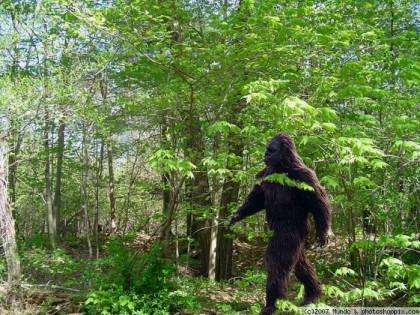
Mapping habitat connectivity for wildlife and their habitats is a central part of conservation planning. I’ve seen firsthand the importance of habitat connectivity to animals. When I worked in Puerto Rico, our team observed that birds moving to roosts at night avoided crossing open areas and followed tree-covered corridors whenever they could.
Since then, I’ve analyzed habitat connectivity and made judgments about how animals might perceive and use corridors of habitat. Recently I decided to try something that might help me understand the process better: be the animal.
I made a habitat connectivity map for me, a large two-legged shy animal that requires a forested landscape and avoids the human domains of farms and development, but will scurry across a road when no one is looking if necessary.
With these constraints in mind, I decided to see how my connectivity map worked. It was designed to get me across the lower peninsula of New Jersey so that I can complete a critical aspect of my life cycle, shopping at a farm stand. The journey began when my wife Esther translocated (i.e., drove) me to a patch of woods overlooking Atlantic coast salt marsh. Once deposited there, my goal was to move west across the peninsula through forest to arrive at a farm stand overlooking Delaware Bay salt marsh. Just two miles, a Sunday ramble on a fall day.

My journey began as I tumbled out of the car and onto a roadside, where I quickly sought the cover of the forest. I then began along a small waterway, tall marsh reeds and thorny thickets. In a short time I came to a 50 acre patch of forest that I could wander through freely. After crossing the wood I came to my first taste of light suburban development. To get to the next forest patch I had to move through this development along a narrow corridor of forest between opposing sets of backyards.
I immediately felt more on edge and alert, hoping to remain undetected. One backyard dog noticed me as I threaded past and sounded the alarm. I could hear its owners telling it to hush. A mountain lion must feel similarly stressed when it needs to slink to one valley to another in California.
I did make it past the neighborhood without further incident and into the next larger patch of woods. I was making good progress across the peninsula, about half-way there when I came upon something unexpected: a fence in the middle of the woods. An 8ft fence, too high for my species to jump. This is not something my maps could account for. I made my best effort to get around the fence, moving along its edge. This was taking me closer and closer toward a loud outdoor power tool. I moved closer out of curiousity to see what it was that was fenced in.
As I followed the fence I began to realize that I was not outside the fence. I was inside it! This caused me alarm because I imagined whoever put up an expensive and extensive fence through the woods would take a trespasser seriously. Just then, a dog on the homestead where the leaf blower was howling sensed me and sounded the alarm. I moved quickly back the way I had come and away from danger.
Now I was faced with a dilemma. How could I complete my lifecycle and arrive safely at the farm stand and get picked up by my patient wife? Well luckily I used a connectivity analysis that accounted for redundancy. There was a secondary route I could take if I backtracked a bit. It wasn’t my preferred route, because it was narrower. This brought home to me the need for allowing creatures a plan B and C in the event that some aspect of the creature or the landscape that we don’t understand prevents their passage.
Plan B it was for me. I backtracked and discovered the habitat corridor I initially avoided. I moved past another narrow nerve-wracking brush with civilization where I could hear and sometimes see backyards and suburban residents. Finally I reached the home stretch, the last large patch of woods between me and the farm stand. My last challenge remained though, a large basin swamp shaded by red maple but filled with a dense layer of briars. I had no choice but to ford the briars, so thick that I mostly clambered on top of them.
At last, I reached the forest edge and saw the farm stand in the distance. A quick scurry along the edge of a field of tomatoes got me to the stand and I met Esther for some fall produce buying. I might not always test out the corridors I plan for my furred and feathered friends, but this experience taught me the importance of understanding the more subtle factors that may be at work when animals are moving through landscapes.